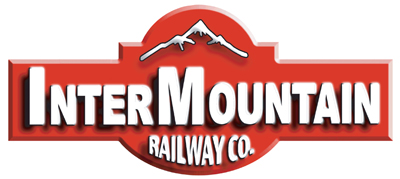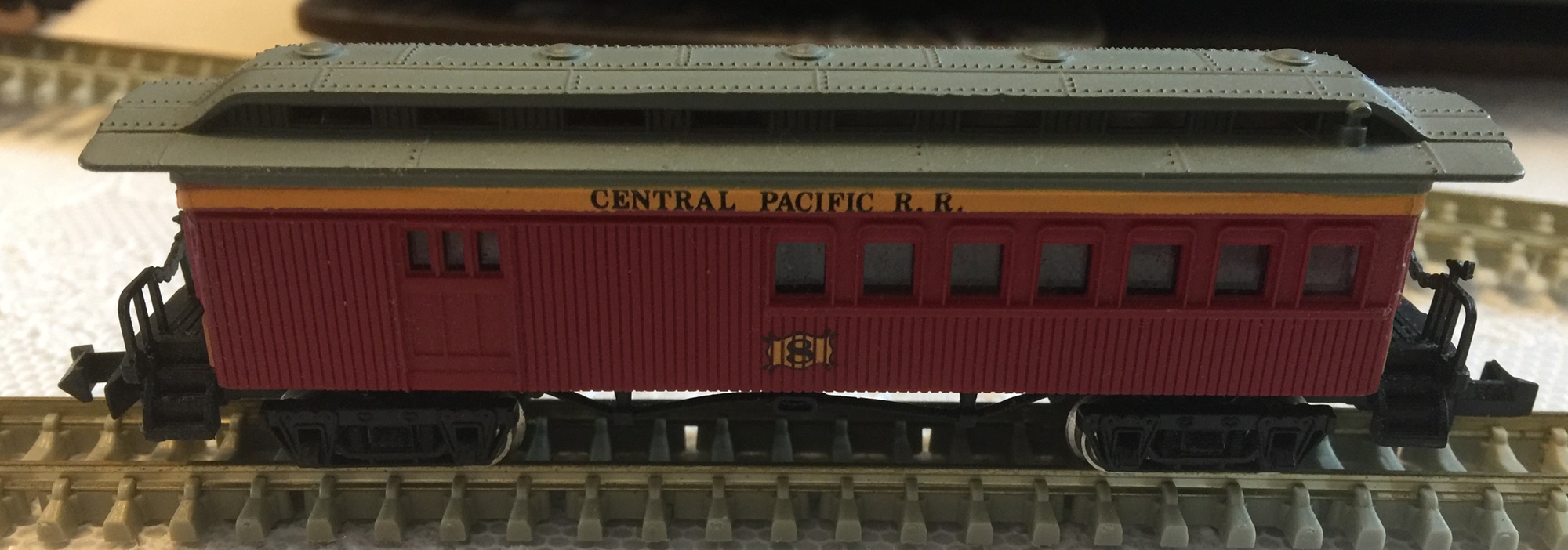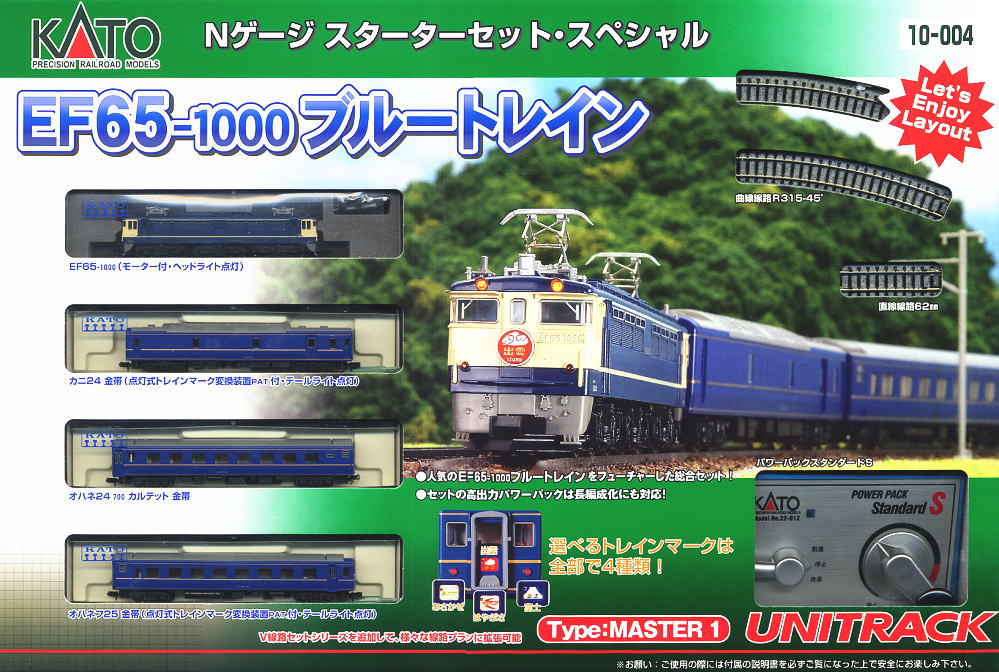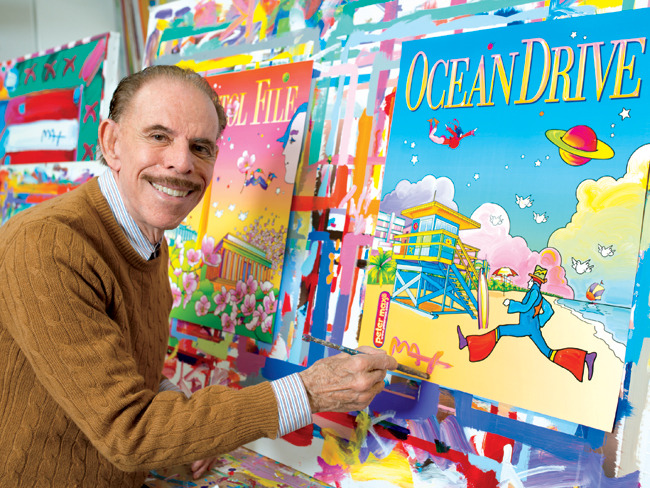Specific Item Information: BLT 3-19
Road Name History: 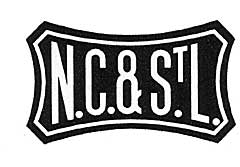 The NC&St.L (not to be confused with NYC&St.L which is the Nickel Plate Road) dates to 1845. Before 1873 it was called the Nashville & Chattanooga and locals continued to call it “the NC” until the end.
The NC&St.L (not to be confused with NYC&St.L which is the Nickel Plate Road) dates to 1845. Before 1873 it was called the Nashville & Chattanooga and locals continued to call it “the NC” until the end.
The NC&St.L ran from Memphis east to Nashville, then southeast to Chattanooga and finally Atlanta. There were also important branches to Paducah, Kentucky where they shared ownership of a bridge across the Ohio River with the CB&Q; Columbia, Tennessee; and Huntsville and Gadsden, Alabama (a big steel center.)
In 1879, NC&St.L began buying and leasing lines to reach Evansville, Indiana then west to St. Louis. In a move typical of the era, the L&N bought 55% of NC&St.L’s stock, and transferred those lines to itself. Although operated independently, the NC&St.L would remain under the control of the L&N for the next 78 years.
NC&St.L was the middle link in “the Dixie Route” for passenger trains between Chicago (or St. Louis) and Florida. Trains such as The Dixie Flagler would travel on (from north to south) C&EI, L&N, NC&St.L (from Nashville to Atlanta), Atlanta Birmingham & Coast, Atlantic Coast Line and Florida East Coast. St. Louis trains skipped the C&EI, and some others used Central of Georgia instead of the AB&C.
On the steam front, Consolidations and Mikes handled the freight with Pacific’s and Mountains pulling passengers. Most engines were equipped with Vanderbilt tenders. The only “modern” steam was a fleet of 25 4-8-4’s, the first of that wheel arrangement in the south. NC&St.L called them “Dixies” instead of Northerns. These had semi-Vanderbilt tenders (flat sides that curved inward toward the bottom), smooth boilers, and conical smoke box fronts. The first batch had wide panels on the running boards that were painted yellow. These earned the nickname “Yellow Jackets.”
North of Chattanooga, the NC&St.L crossed the Cumberland Mountains with 2.5% grades. This required pusher service. They had a trio of 2-8-8-2’s for this but often used 2-8-0’s and Mikes. Since there was nowhere to turn power at the summit, the helpers could face in either direction. Picture a long passenger train with a Yellow Jacket on the point. Passenger trains received helpers ONLY on the head end. So a 2-8-2 couples to the front of the Yellow Jacket -nose-to-nose. The Mike then leads the train over the mountains with the Vanderbilt tender leading the way. This happened routinely.
By 1953, NC&St.L had completely dieselized with an all EMD roster. F3’s and F7’s were painted blue and silver with black roofs. Geeps and switchers were painted oxide red with yellow stripes (with the exception of some dual service geeps in blue and silver.) The first batch of GP7’s were delivered with switcher trucks. There is some argument over whether they did this to save money or weight. Later groups came with standard Blomberg trucks. The F’s were used in freight and passenger service although only the B units had steam generators so a passenger train would have at least an A and B no matter how short it was.
During the 50’s, NC&St.L was 1,043 miles long (a bit longer than Lackawanna or Montana Rail Link), had 132 diesels, 106 passenger cars and 6,800 freight cars. In 1957, they were finally merged into parent L&N.

The NC&St.L ran from Memphis east to Nashville, then southeast to Chattanooga and finally Atlanta. There were also important branches to Paducah, Kentucky where they shared ownership of a bridge across the Ohio River with the CB&Q; Columbia, Tennessee; and Huntsville and Gadsden, Alabama (a big steel center.)
In 1879, NC&St.L began buying and leasing lines to reach Evansville, Indiana then west to St. Louis. In a move typical of the era, the L&N bought 55% of NC&St.L’s stock, and transferred those lines to itself. Although operated independently, the NC&St.L would remain under the control of the L&N for the next 78 years.
NC&St.L was the middle link in “the Dixie Route” for passenger trains between Chicago (or St. Louis) and Florida. Trains such as The Dixie Flagler would travel on (from north to south) C&EI, L&N, NC&St.L (from Nashville to Atlanta), Atlanta Birmingham & Coast, Atlantic Coast Line and Florida East Coast. St. Louis trains skipped the C&EI, and some others used Central of Georgia instead of the AB&C.
On the steam front, Consolidations and Mikes handled the freight with Pacific’s and Mountains pulling passengers. Most engines were equipped with Vanderbilt tenders. The only “modern” steam was a fleet of 25 4-8-4’s, the first of that wheel arrangement in the south. NC&St.L called them “Dixies” instead of Northerns. These had semi-Vanderbilt tenders (flat sides that curved inward toward the bottom), smooth boilers, and conical smoke box fronts. The first batch had wide panels on the running boards that were painted yellow. These earned the nickname “Yellow Jackets.”
North of Chattanooga, the NC&St.L crossed the Cumberland Mountains with 2.5% grades. This required pusher service. They had a trio of 2-8-8-2’s for this but often used 2-8-0’s and Mikes. Since there was nowhere to turn power at the summit, the helpers could face in either direction. Picture a long passenger train with a Yellow Jacket on the point. Passenger trains received helpers ONLY on the head end. So a 2-8-2 couples to the front of the Yellow Jacket -nose-to-nose. The Mike then leads the train over the mountains with the Vanderbilt tender leading the way. This happened routinely.
By 1953, NC&St.L had completely dieselized with an all EMD roster. F3’s and F7’s were painted blue and silver with black roofs. Geeps and switchers were painted oxide red with yellow stripes (with the exception of some dual service geeps in blue and silver.) The first batch of GP7’s were delivered with switcher trucks. There is some argument over whether they did this to save money or weight. Later groups came with standard Blomberg trucks. The F’s were used in freight and passenger service although only the B units had steam generators so a passenger train would have at least an A and B no matter how short it was.
During the 50’s, NC&St.L was 1,043 miles long (a bit longer than Lackawanna or Montana Rail Link), had 132 diesels, 106 passenger cars and 6,800 freight cars. In 1957, they were finally merged into parent L&N.
Brand/Importer Information: InterMountain was founded in 1985 by Fred Brummet. They got started in the model railroad business by producing O-Scale model kits. They got started in the N Scale business almost a decade later when in 1994 they introduced the 40-23 reefer car in kit form. Later, in 1998, they started producing RTR (Ready-to-Run) models. By the early 2000s, InterMountain phased out kit production in favor of the RTR models.
The InterMountain Railway company is located at 1224 Boston Ave in Longmont, CO. They are a manufacturer of HO, N and Z scale model trains. They have produced kits as well as RTR (Ready-To-Run) models. Their N Scale products include locomotives as well as rolling stock. Their rolling stock lineup includes Boxcars, Hoppers, Tank Cars, Reefers, Gondolas, Stock Cars and Flatcars.
Their locomotive releases have primarily been diesel units, with the one major exception being their series of AC-12 Cab Forward steam locos. Their diesel lineup includes F3's, F7's, F9's, SD40's, SD45's and FT units. They are known for quality and detail. They also release their rolling stock in larger varieties of road numbers than most of the other manufacturers.
The InterMountain Railway company is located at 1224 Boston Ave in Longmont, CO. They are a manufacturer of HO, N and Z scale model trains. They have produced kits as well as RTR (Ready-To-Run) models. Their N Scale products include locomotives as well as rolling stock. Their rolling stock lineup includes Boxcars, Hoppers, Tank Cars, Reefers, Gondolas, Stock Cars and Flatcars.
Their locomotive releases have primarily been diesel units, with the one major exception being their series of AC-12 Cab Forward steam locos. Their diesel lineup includes F3's, F7's, F9's, SD40's, SD45's and FT units. They are known for quality and detail. They also release their rolling stock in larger varieties of road numbers than most of the other manufacturers.
Item created by: nscalestation on 2016-12-06 20:00:29
If you see errors or missing data in this entry, please feel free to log in and edit it. Anyone with a Gmail account can log in instantly.
If you see errors or missing data in this entry, please feel free to log in and edit it. Anyone with a Gmail account can log in instantly.



